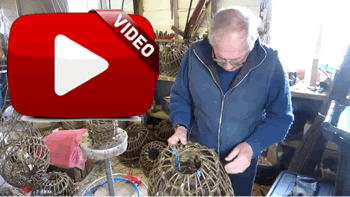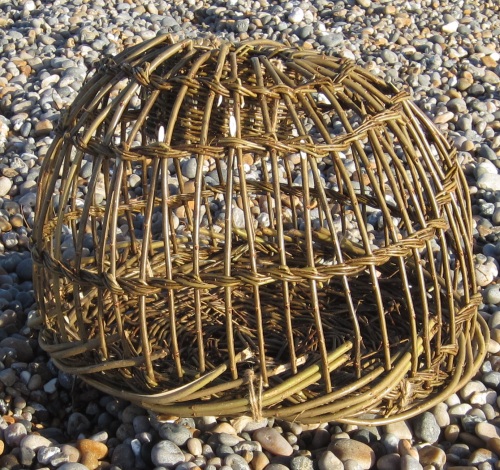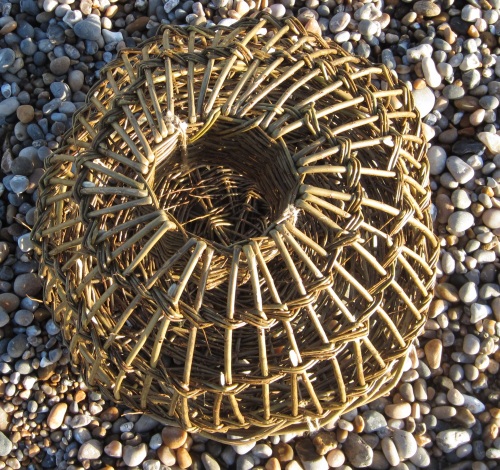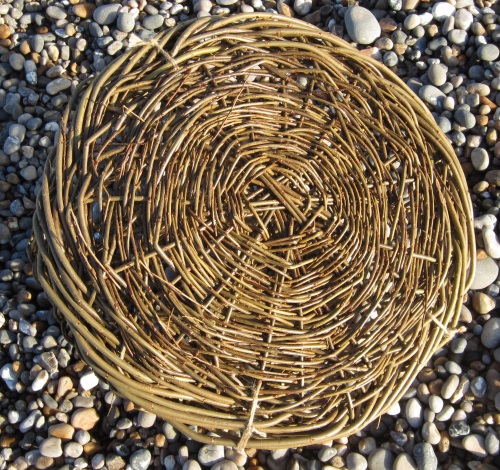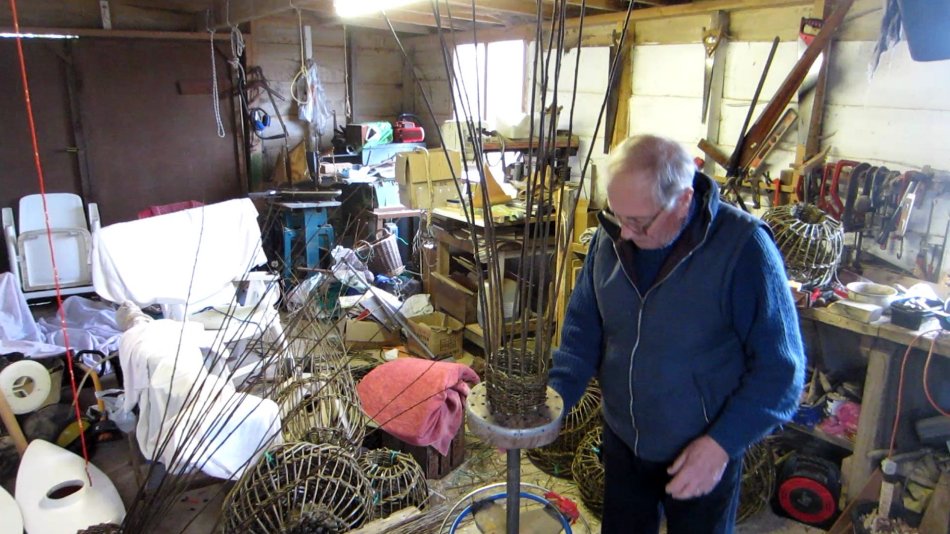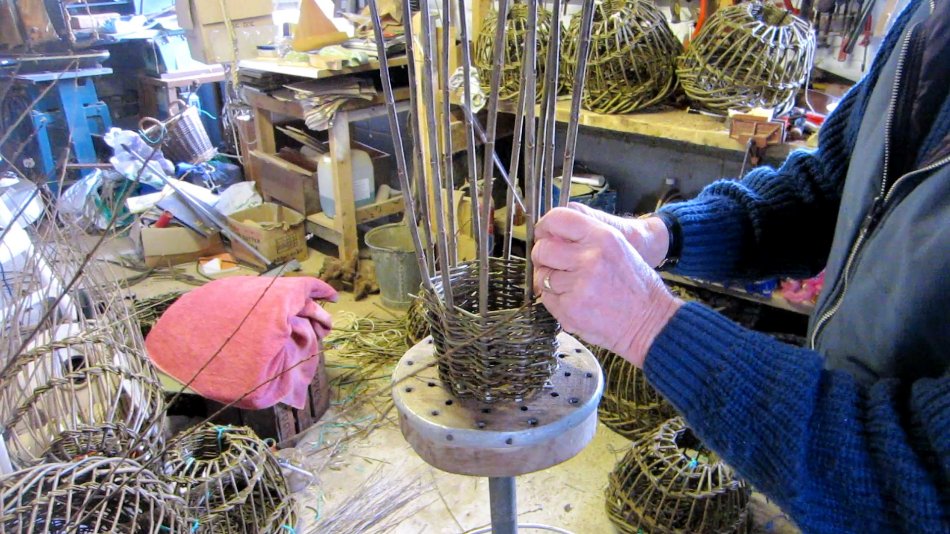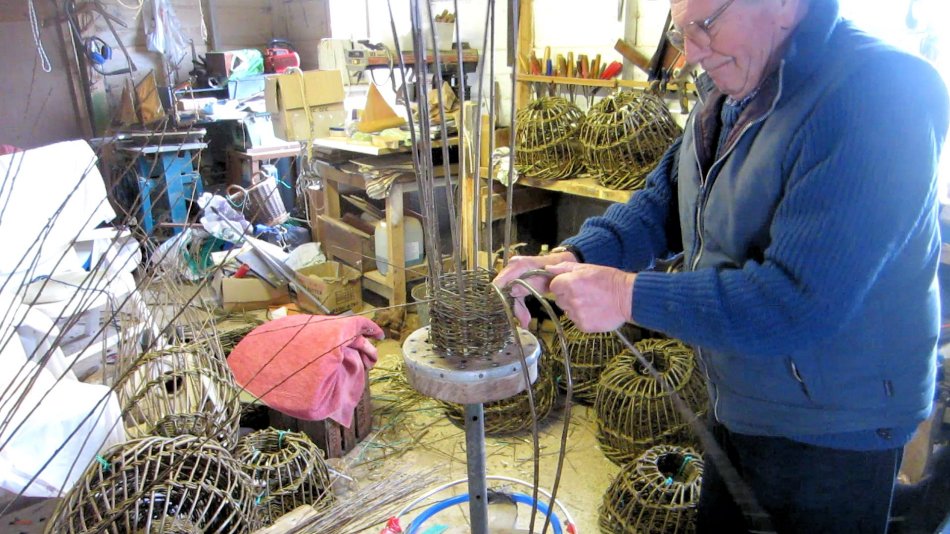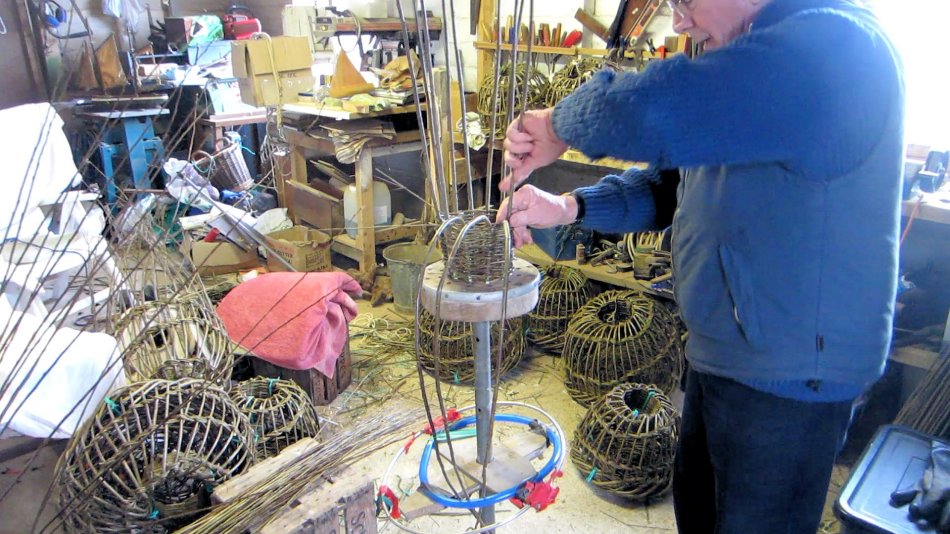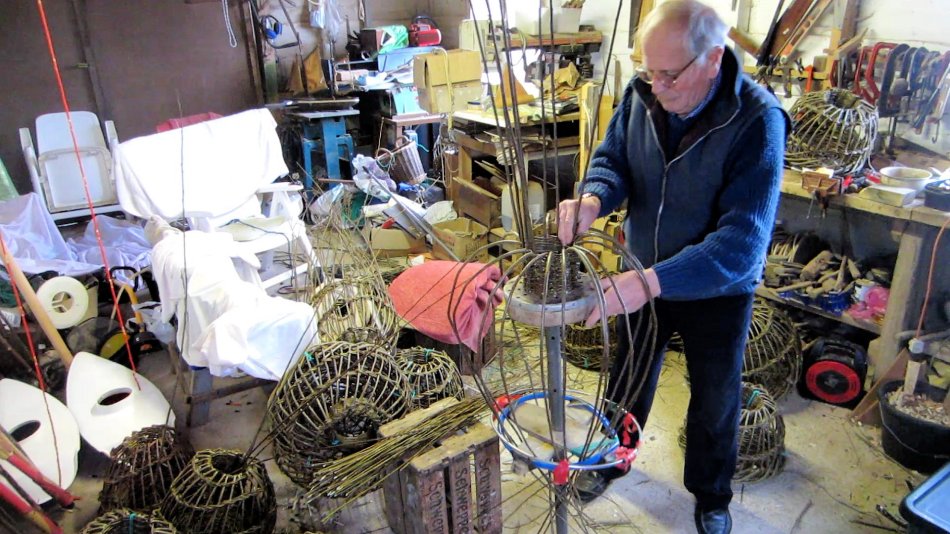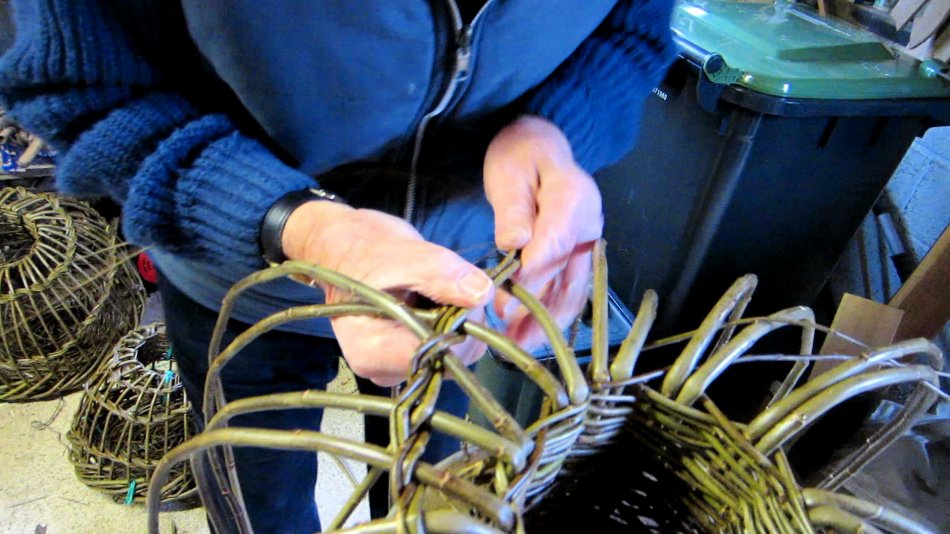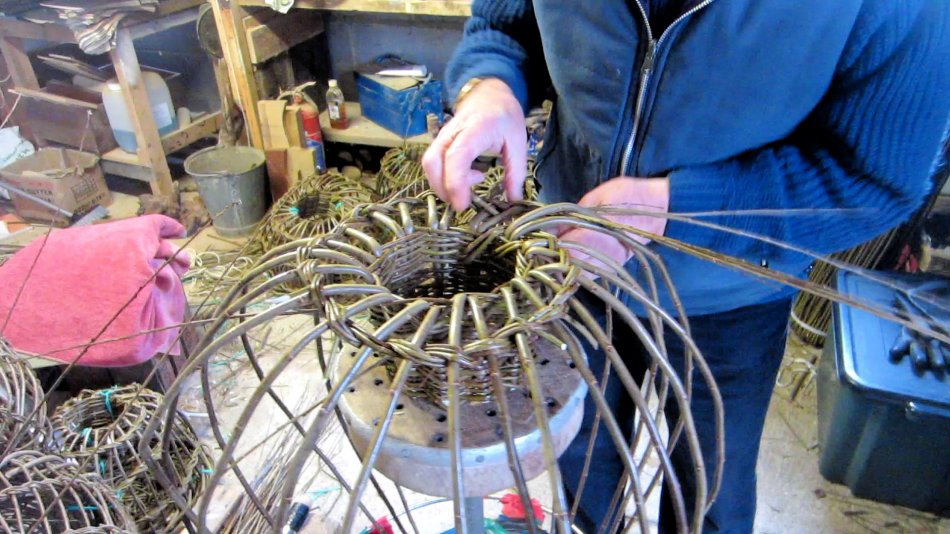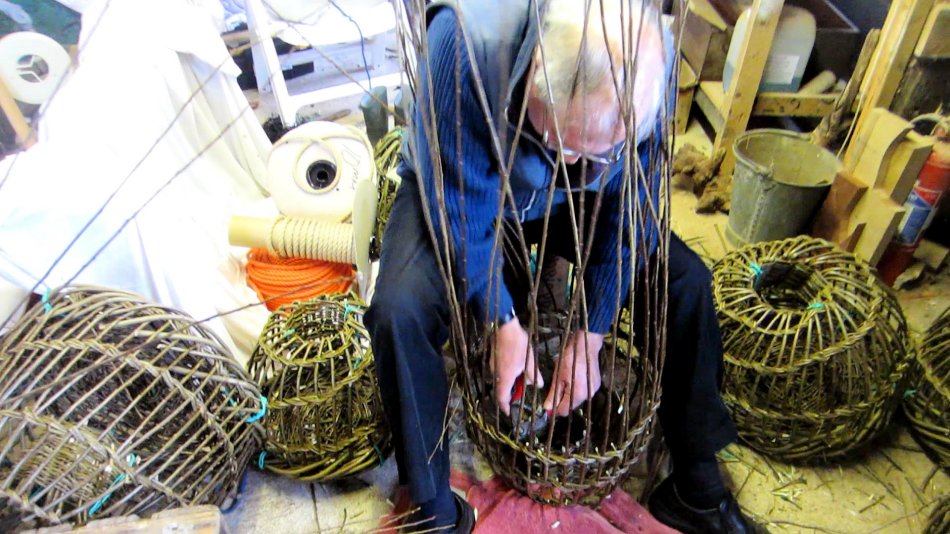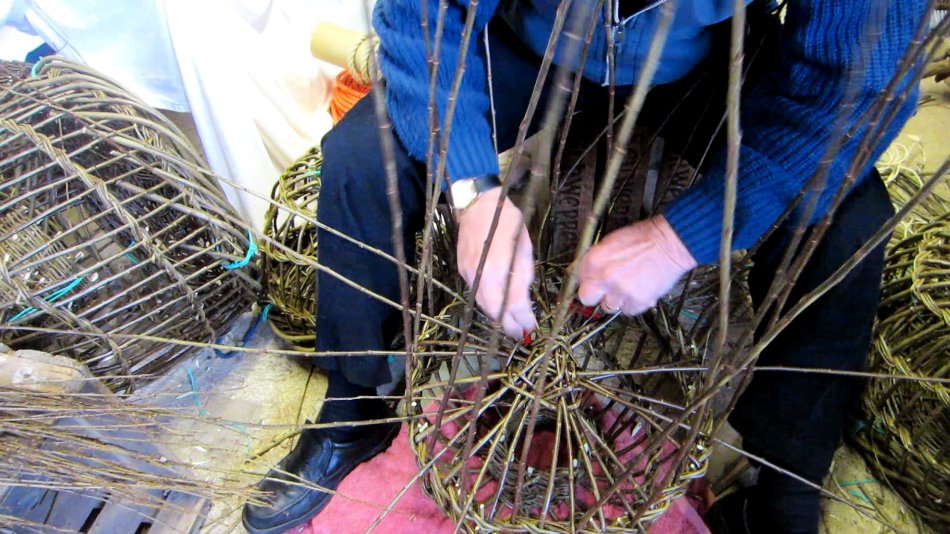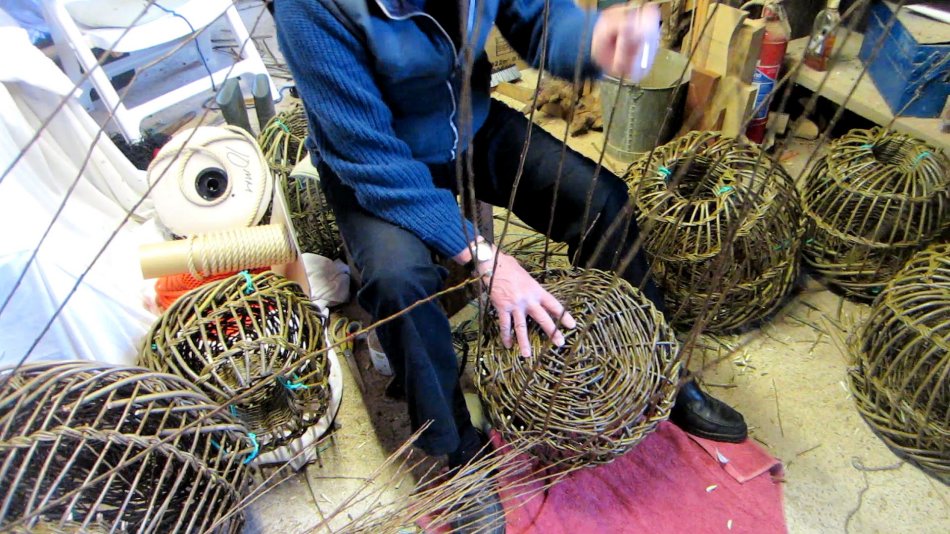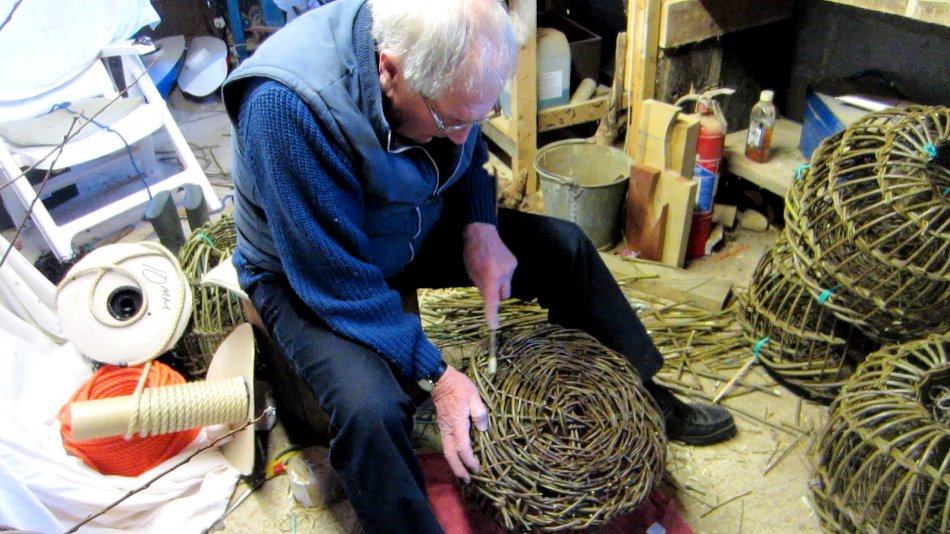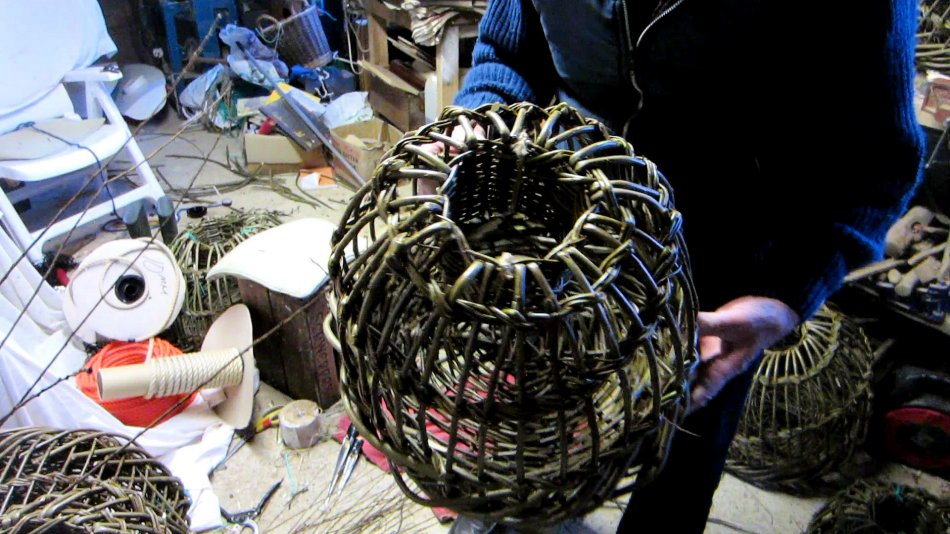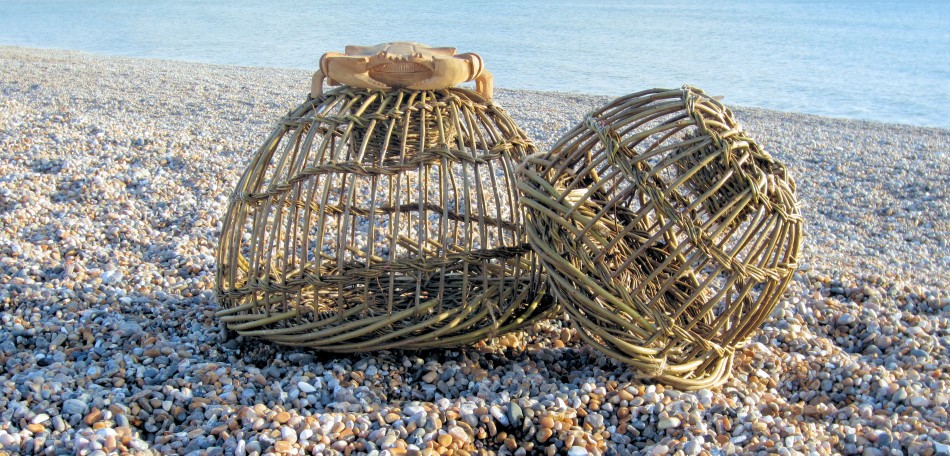
Traditional willow crab and lobster pots
Roy Gollop has been making willow lobster and crab pots since the age of 10 using a method passed down to him through several generations. The craft of willow pot making has almost disappeared due to the emergence of newer, more durable technologies, but Roy is compelled to keep the ancient tradition alive. Advances in technology now see most commercial fishermen using plastic or metal ring and net pots which have a longer life expectancy compared with a willow pot.
Historically, during the winter months on days when they couldn’t fish, fishermen would make their own pots from willow sourced from a local withy bed. A withy bed comprised a small copse of willow trees cultivated specifically for the purpose of pot making. The willow trees would undergo pollarding as they were harvested each year with branches cropped close to the trunks then gathered into bundles and carted off for shredding with the remaining leaf spikes and nibs removed with a knife. Fishermen would take to the sea in their open topped clinker boats, where they would lower the pots onto the shifting seabed and haul them back in the next day, day after day, month after month and this tradition provided a vital stream of income for fishing families. Fresh fish would be secured with a ‘skiver’ (a wooden skewer) to bait the pots and in the past lobster and crab fishermen would spend a considerable amount of their time fishing for bait.
Pots are made in three stages; the 'mouth', the ‘ringing around’ and the ‘bottoming in’. Little equipment is required, except for a stand to assist with the early stage of the pot formation. At the top of the stand is a mule made of hardwood, drilled with holes to hold the long rods of willow while forming the mouth of the pot. Once the mouth is complete, the willow is bent back down to create the main struts of the body of the pot. Willow is woven between these thick strands, ensuring they are spaced evenly leaving no opportunity for the crustaceans to escape. Fresh willow is flexible but also strong, and it’s tricky work manipulating it by hand to bend sufficiently. As more strands are woven together, the structure takes shape. The pot is finished by plaiting the base, creating an incredibly sturdy foundation.The entire pot making process takes about 4 to 5 hours for a single person with each pot typically lasting between 2 and 3 years. The pots would become damaged by wear and tear in the sea so fishermen would take lengths of willow out with them and make quick repairs.
There’s a lot of difference regionally between traditional crab and lobster pots. Devon and Dorset pots are traditionally wider and flatter than Cornish ones. Details in the weave and local variations make it possible to tell where, and even by whom, the pots were made.Buy traditional crab / lobster pots
If you're looking to add an authentic coastal or nautical touch to your home or business, we offer traditional lobster pots for sale made by Roy Gollop.
-
Willow lobster pot
£55.00Diameter: 45cm
Height: 36cmSorry, sold out at present
New stock available from mid to late December 2017.
Measurements are approximate.
Free postage and packaging - free delivery to mainland UK



